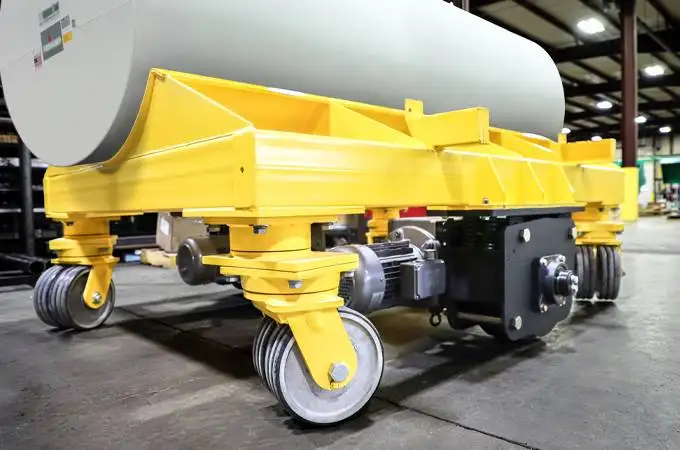
Material handling is a critical aspect of various industries, including manufacturing, logistics, construction, and warehousing. It ensures the efficient movement, storage, control, and protection of materials throughout the supply chain. As a writer and researcher, I aim to explore the essential equipment used in material handling, shedding light on their roles in improving operational efficiency and workplace safety.
Categories of Material Handling Equipment
Material handling equipment falls into four primary categories: transport equipment, positioning equipment, storage equipment, and unit load formation equipment. Each category has specific tools and machines designed to optimize material flow and streamline operations.
1. Transport Equipment
Transport equipment moves materials from one location to another, whether within a facility or between different sites. The following are the most common types:
a. Conveyors
Conveyors are widely used in manufacturing and distribution centers to transport goods efficiently. They come in various types, such as belt conveyors, roller conveyors, and overhead conveyors. These systems minimize manual labor and speed up processes, reducing downtime and improving overall efficiency.
b. Forklifts
Forklifts are essential for lifting, transporting, and stacking heavy loads in warehouses and factories. Available in electric, diesel, and propane-powered models, forklifts enhance productivity by allowing workers to move bulky items with ease. Different types include counterbalance forklifts, reach trucks, and pallet jacks.
c. Hand Trucks and Pallet Jacks
Hand trucks and pallet jacks provide a simple yet effective means of moving heavy loads manually. Pallet jacks, either manual or electric, are commonly used in retail and warehouse environments to lift and transport palletized goods.
d. Automated Guided Vehicles (AGVs)
AGVs are robotic transport systems that move materials autonomously along pre-defined paths. These smart vehicles are increasingly used in modern warehouses and manufacturing plants to reduce labor costs and enhance safety by minimizing human intervention.
2. Positioning Equipment
Positioning equipment helps in accurately placing materials during handling, manufacturing, and assembly. These tools enhance precision and safety, reducing workplace injuries.
a. Hoists and Cranes
Hoists and cranes are used for lifting and lowering heavy loads. Overhead cranes, jib cranes, and gantry cranes are common in large industrial facilities. They provide efficient material movement over a wide area, ensuring minimal manual effort.
b. Lift Tables and Scissor Lifts
Lift tables and scissor lifts are used to raise materials to a desired height. These devices improve ergonomics by reducing strain on workers and facilitating smooth operations in assembly lines and warehouses.
c. Turntables and Tilt Tables
Turntables and tilt tables allow workers to reposition materials easily, reducing the need for excessive bending and reaching. These tools are particularly useful in manufacturing settings where precise positioning is required.
3. Storage Equipment
Storage equipment plays a crucial role in organizing and protecting materials when they are not in use. Effective storage solutions optimize space and improve accessibility.
a. Shelving and Racks
Shelving and racks are commonly used in warehouses and retail environments to store materials systematically. Types include selective pallet racks, cantilever racks, and push-back racks, each designed to accommodate specific storage needs.
b. Mezzanines
Mezzanines are elevated platforms that create additional storage space within a facility. These structures maximize vertical space and provide an efficient solution for managing inventory.
c. Automated Storage and Retrieval Systems (AS/RS)
AS/RS is an advanced storage solution that uses robotic systems to retrieve and store items automatically. This technology enhances inventory management and reduces the need for manual labor.
4. Unit Load Formation Equipment
Unit load formation equipment helps consolidate materials into a single, manageable unit for efficient transportation and storage.
a. Pallets and Skids
Pallets and skids provide a stable platform for stacking and moving goods. They come in various materials, such as wood, plastic, and metal, and are essential for seamless warehouse operations.
b. Stretch Wrappers and Strapping Machines
Stretch wrappers and strapping machines secure loads for safe transportation. These devices help prevent damage during transit by stabilizing stacked materials.
c. Containers and Bins
Containers and bins are used for organizing and protecting materials. They come in different sizes and materials to accommodate various storage and handling requirements.
The Role of Technology in Modern Material Handling
With the advent of automation and digitalization, material handling has become more efficient and precise. Technologies such as the Internet of Things (IoT), artificial intelligence (AI), and data analytics are transforming the industry.
1. IoT and Smart Sensors
IoT-enabled sensors provide real-time tracking of inventory, ensuring better visibility and management. These devices help companies monitor equipment performance, reducing downtime and maintenance costs.
2. AI and Machine Learning
AI-driven analytics optimize material flow by predicting demand and identifying inefficiencies. Machine learning algorithms improve decision-making and enhance operational efficiency.
3. Robotics and Automation
Robots and automated systems perform repetitive tasks with high precision, reducing the need for manual labor and increasing productivity. From robotic picking systems in warehouses to self-navigating AGVs, automation is revolutionizing material handling.
Benefits of Using the Right Material Handling Equipment
Investing in the right equipment offers several advantages:
- Increased Efficiency: Automated and mechanized handling solutions speed up operations, reducing delays and bottlenecks.
- Improved Safety: Using appropriate tools minimizes workplace injuries and ensures compliance with safety regulations.
- Cost Savings: Efficient equipment reduces labor costs, minimizes damage to goods, and enhances overall productivity.
- Better Space Utilization: Optimized storage solutions maximize facility space, allowing for improved organization and accessibility.
Conclusion
Material handling equipment plays a crucial role in optimizing industrial and commercial operations. From transport and positioning tools to storage and unit load formation systems, each category contributes to seamless material movement and organization. As a researcher, I recognize the evolving landscape of material handling, driven by technological advancements and automation. Understanding the right equipment for specific needs ensures businesses enhance efficiency, safety, and cost-effectiveness in their operations.
